Mining May Become the Safest Job in the World

Save lives. Save time. Save money. All from a cozy office hundreds of miles away.
Mining has been around for thousands of years and yet it still remains one of the most dangerous jobs on the planet. Hundreds of people die or get severely injured on the job every year. In Australia alone, 11 people have died so far in 2016. [1] Quite frankly, that’s 11 miners too many, but most companies think fatalities are inevitable given the dangerous nature of the work. However, a beacon of hope has emerged in the past decade that could put an end to it all: digital technology.
The Mine of the Future
Rio Tinto, a global metals and mining company, is leading the charge in incorporating digital technology into their daily operations. Focused primarily in Australia and North America, Rio Tinto’s shareholder promise is to deliver long-term, sustainable returns in part by using technology to increase productivity. [2] This is where the automation comes in.
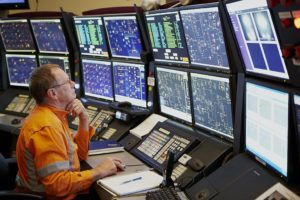
Rio Tinto has designated their Pilbara location in Australia to be their testing ground for new automated technologies. They call it the “Mine of the Future”. The goal for Pilbara is to eventually control all its vehicles and machinery from the Operation Center in Perth, 920 miles away. There, operators and data analysts work side-by-side to orchestrate the actions of trucks, excavators, drills and trains. [3]
So how does this actually work?
Driverless trucks have sensors on them that feed data to the operations center, enabling the operators and data analysts to understand the exact layout of the mine as well as the truck’s position within it. Then, the operators navigate the trucks around the mine in the most efficient way possible.
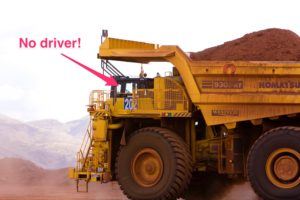
Smart autonomous excavators use similar visual sensors to differentiate between mud and usable materials, enabling them to load up trucks without any human interference.
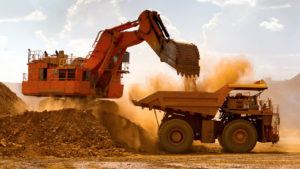
Smart autonomous drills have sensors that let them sense when rocks have fractured along their natural break line, which then helps remote operators and data analysts determine where exactly to drill next.

Once the other machines have done their work, autonomous trains with the ability to carry larger loads than ever before will run from the mine to the port.
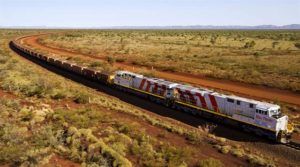
Essentially, these machines are able to work smarter and more effectively than any human miner could. According to the CEO Sam Walsh, their autonomous trucks “outperformed the manned trucks by an average of 12%, primarily by eliminating required breaks, absenteeism, and shift changes.” [2] 12% may not seem like a huge advancement, but that small percentage will compound over time, decreasing total machine downtime and variability while increasing the overall efficiency and reliability in a big way. [4] Even more, fatalities will be non-existent once all automated vehicles are up and running.
Why isn’t everyone hopping on the automation bandwagon?
1. It’s very expensive. Not only will Rio Tinto have to pay for the initial versions of these machines, but they will also have to periodically update the machinery to make sure it functions accordingly. On automated trains alone, Rio Tinto is expected to spend $442M. [6] Their R&D costs for the full project are going to be through the roof.
2. Being a first mover is hard and introducing new technology into your day-to-day operations is risky. Who knows if it will make a big enough impact to cover those huge upfront costs?
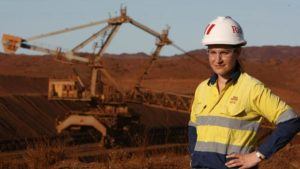
3. There has been some resistance from the miners regarding automation. Unions have accused Rio Tinto of lying to their workers and using automation to cut labor costs. [5] Rio Tinto has assured their workers that no jobs will be lost, but rather the work will simply change from individual “blue-collar work” into a more group-oriented “knowledge-based role” [3] Moreover, by convening the workers under one roof at the Perth Operations Center, Rio Tinto has seen more collaboration and collective-decision making which ultimately has saved them millions of dollars. [4]
What’s next for Rio Tinto?
1. They need to test the “Mine of the Future” and get a proven Return on Investment number. If the ROI is good enough, they can try to get funding from shareholders or banks.
2. They need to decide when, where and how fast to expand the “Mine of the Future” concept. Because this would require a huge upfront cost, they need to do a cost-benefit analysis to justify such a large investment.
3. They need to think about the unions and their employees. How will they navigate those relationships going forward? Do their existing employees have what it takes to get the automated job done?
4. They need to remember that technology is a complement, not a substitute. While automated machines will improve safety and productivity at the mine, Rio Tinto can’t lose sight of how important humans are to their operations as well.
Total Word Count: 798
Works Cited
[1] “Safe Work Australia: Worker Fatalities”
[2] “The CEO of Rio Tinto on Managing in a Highly Cyclical Industry”
https://hbr.org/2016/03/the-ceo-of-rio-tinto-on-managing-in-a-hypercyclical-industry
[3] “Industrial Internet of Things: Unleashing the Potential of Connected Products and Services”
http://www3.weforum.org/docs/WEFUSA_IndustrialInternet_Report2015.pdf
[4] “Recombination at Rio Tinto: mining at the push of a button”
[5] “Unions Vs. Rio: The Automation Battle”
https://www.australianmining.com.au/features/unions-vs-rio-the-automation-battle/
[6] “Rio Tinto Spends $442M To Automate Trains”
http://www.itnews.com.au/news/rio-tinto-spends-442m-to-automate-trains-290913


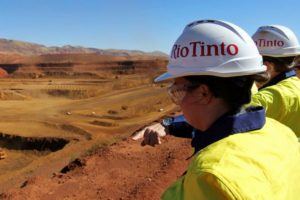

I particularly agree on the fourth point in your last paragraph regarding the future of mining, or even for any industry. But I will add the line that automation can only complement these procedural tasks which were historically done by human labors, in other words making these tedious labor-intensive work more efficient, but not the kind of jobs which involve creative thinking to come up with original ideas. Automation, machine-learning, and big data are largely based on recognizing and predicting a pattern based on historical data. While efficiency can be improved, the original idea creation will still be dependent upon human creation. We will still be employed! Stay creative 🙂
I think this is a great example of how the digital transformation is impacting unexpected industries!
One very important point that you touched on, is employees fear that they will get displaced by “smart machines”, noting that Rio Tinto has assured workers that no jobs will be lost, rather reassigned to “knowledge-based roles”. My big concern here is that existing blue-collar labor may not have the capabilities required for these new roles, and thus I wonder if Rio Tinto plans to re-educate all blue-collar employees and bear the cost of that education. I also am very skeptical of the idea that two laborers who did the same job in the mine would be retained for “knowledge roles” given their knowledge is likely to be identical, and thus inefficient to duplicate. I think to your point Rio Tinto needs to be extremely careful around their message to employees as the pushback on the union front can not be understated.
Your post is interesting and really timely after learning Anglo American’s case at LEAD the other day! To me, automation sounds to be the way which we should pursue, considering its safe nature. I am optimistic about economics; ROI/Cost-Benefit hurdle could be overcome in near future especially because technology will generally become cheaper, while labor cost tends to increase. So, the toughest challenge seems to be how to deal with unions and employees. I feel a little bit pessimistic about converting employees from mining operators to more generalist roles, which would require a very different skill set. However, considering the moral as a manager and potential adverse impact on its relationship with relevant government/communities, the change needs to be very gradual (for example, by not employing as many as they have been doing, we could expect natural attrition to reduce headcount), and emphasis should always be on safety, not efficiency in any kind. This could be a difficult journey for Rio Tinto, but considering the potential impact on long-lasting nature of safety issue in natural resource industry, I hope Rio Tinto keeps going to this direction.
Thank you for the interesting post Kelly! I must confess that when I initially read the title, I though a new safe way was invented that would simply eliminate all or most of the dangers facing employees in the mining industry. And it is indeed the case, but at the cost of the mining employees losing their jobs. Your post and the comments received address the challenges that such as shift in the employee structure for mining companies will bring.
At the same time, given the immense capital expenditures required for such projects, I wonder whether companies operating in parts of the world were regulations relating to employees safety are not so stringent will adopt this type of technology? And related to Anglo American LEAD case study we had, do you think Rio Tinto and all the other mining companies will invest in such technological changes ready to take a financial hit and make the work environment safer or will they invest only if this provides a better financial outcome?
Another fantastic post, Kelly. I am having a really hard time with folks not being completely on board with this plan. For a forward looking mining company, I don’t think it’s out of the foreseeable future that the cost of human life will far outweigh the cost of running an automated mine. And ultimately I hope that society starts to move away from needing humans to perform the most dangerous tasks. I fail to see how reducing the number of people in dangerous mining positions is ever a bad thing. Obviously, it is not ideal for those who are currently in the mining field, but the idea here is that future generations will not have to resort to this kind of dangerous labor. This feels like, to me, an area of short-term friction for the benefit of the future of mining and of energy.